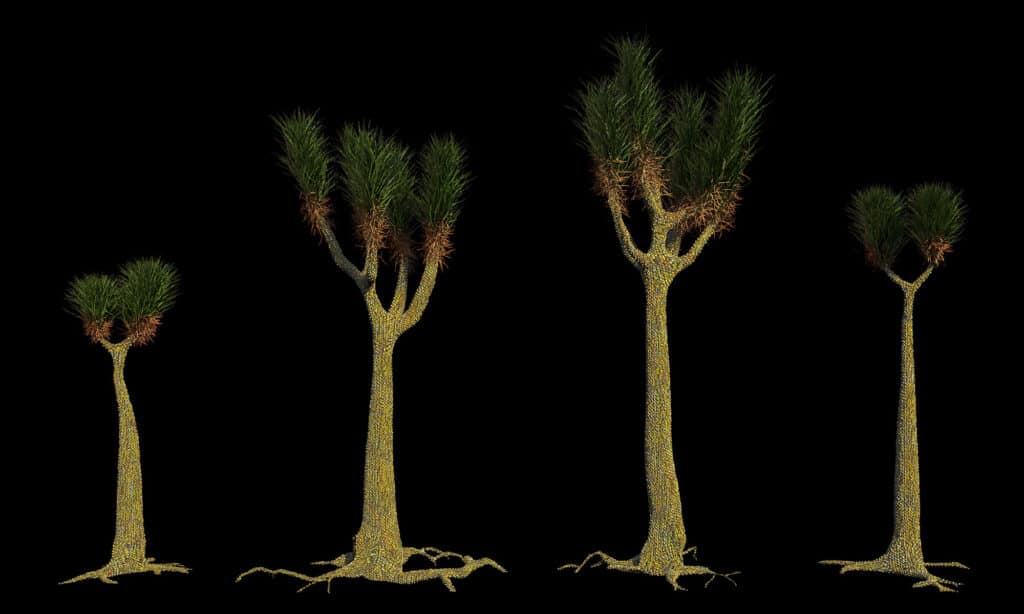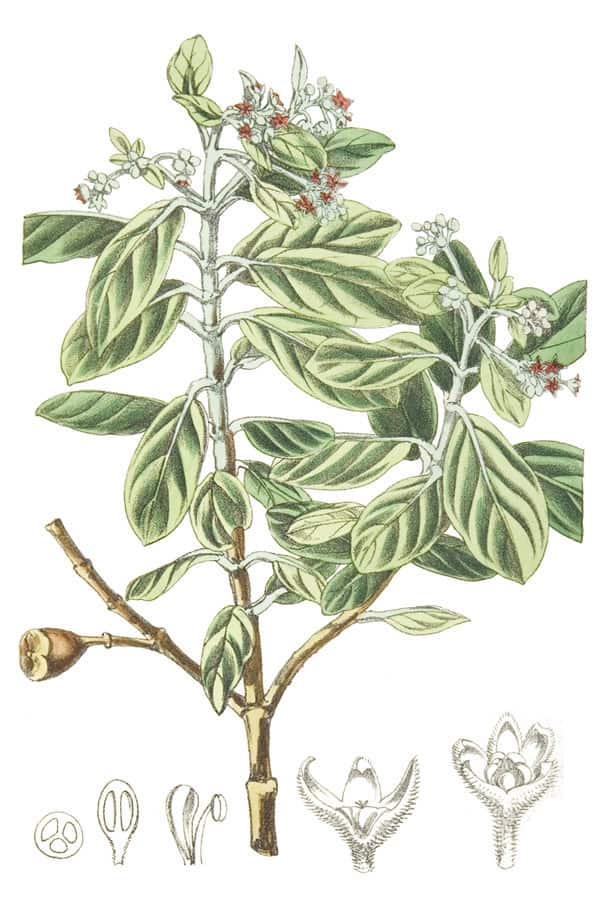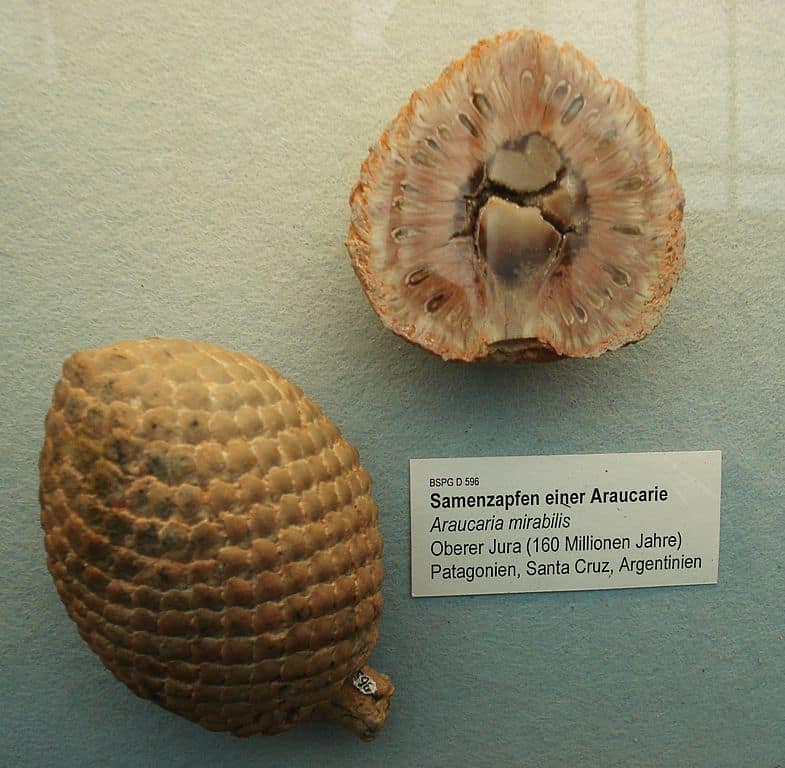Extinct trees? Is there really such a thing?
We know that certain animal species are under threat, but trees are not usually under the spotlight. However, there are certain tree species we’ll no longer see. From 300-million-year-old giant dinosaur dinners to tasty modern apples and pears — here are seven extinct trees.
1. Sigillaria

Extinct sigillaria trees reached 100 feet tall and were covered in photosynthesizing greenery.
©iStock.com/dottedhippo
Sigillaria was a lycopodiophyte tree that grew in the late Carboniferous period and became extinct 300 million years ago. It grew to 100 feet tall and had a twisted trunk 3-4 feet in diameter. It had long grass-like leaves that also grew in a spiral directly from its soft trunk. Rather than seeds, it reproduced by spores that hung down from its stems in cone-like structures.
Botanists think their trunks were covered in photosynthetic material, so Sigillaria was probably green from its bottom to the top. It was a quick grower that probably died once it reproduced, but experts debate this.
They’re found in the fossil record across the world including in Europe, Zimbabwe, China, Canada, and the United States. Sigillaria died out during the Westphalian to Stephanian climate change transition that dried up swamps and decimated many other tropical lowland plants.
The Sigillaria genus of trees was replaced by conifers and their fossilized remains make modern-day fossil fuels. But this isn’t a tree at all! It was part of the lycopsid family and more closely related to modern-day moss.
2. Lepidodendron

Lepidodendron is often called “the scale tree,” due to its fossilized bark resembling reptile scales.
©public domain – License
A vascular tree in the Lepidodendraceae family, Lepidodendron grew in the Carboniferous period. This soft-trunked tree is often called “the scale tree” because its fossilized bark resembles reptile scales. In the 1800s, fossilized trunks were admired as giant reptile remains on display in traveling shows.
Before they became extinct, lepidodendron grew in wet coal forests and was most likely soft, a bit like herbs, with the majority of its trunk clear of branches until the very tip.
Scale trees reached over 100 feet tall and had a trunk diameter of 3-4 feet. Thousands of them grew tightly packed which made prehistoric forests very dense. This is another tree that reproduced via spores and experts think it died after reproducing. Lepidodendron became extinct 300 million years ago in the Westphalian to Stephanian climate change transition alongside Sigillaria, so we’ll never know for sure.
3. St. Helena Olive (Nesiota elliptica)

St Helena Olive is an extinct tree that died very recently.
©John Charles Meliss / public domain – License
A more modern extinct tree is the St. Helena Olive, which only died out recently in 1994.
This tree was not a true olive, but a relative of the jujube tree. It was endemic to St. Helena Island in the south Atlantic Ocean and is sometimes called the St. Helena mountain bush.
However, by the 19th-century humans had all but destroyed their native woodland habitat as they made room for grazing goats. Only 15 of these endemic species were recorded in the wild in the late 19th century. The last wild bush died in 1994 after governmental efforts to save the species. The very last St. Helena’s Olive died in 2003 in cultivation.
4. Kokia cookei

By the time it was discovered by western scientists,
Kokia cookeiwas nearly gone.
©David Eickhoff from Pearl City, Hawaii, USA / CC BY 2.0 – License
This small, deciduous tree was endemic to the lowlands of western Moloka’i in the Hawaiian Islands. By the time it was discovered by western scientists, it was nearly gone. It’s thought that Polynesian settlers began deforesting the island from around 1,000 AD for agriculture. This widespread clearance destroyed its habitat.
Kokia cookei had large, bright red flowers that would have attracted pollinators such as honeycreepers which are Hawaii’s nectar-drinking birds. Many honeycreepers are now extinct and the remaining species are endangered.
Kokia cookei was presumed extinct in 1950, but a single seedling was found in 1970. Unfortunately this seedling died in a fire, but it had been previously grafted to the endangered Keokia kauaiensis plant. There are just over 20 of these plants alive today, but no full Kokia cookei exists.
5. Araucaria mirabilis

Extinct
Araucaria mirabilisseed cones were petrified by a volcanic eruption 160 million years ago.
©Ghedoghedo / CC BY-SA 3.0 – License
Araucaria mirabilis belongs to the Araucaria genus. It’s an extinct conifer that used to grow in Patagonia, Argentina. Araucaria reached 330 feet in height and had a diameter up to 11 feet. Experts think they were the primary source of food for sauropod dinosaurs in the Jurassic period and the reason why sauropods evolved to have such long necks. This article from the Proceedings of the Biological Society explains more about this fascinating theory.
Botanists are able to study this tree in depth because 160 million years ago a volcanic eruption buried an ancient forest. Its fossilized tree trunks are still upright in Cerro Cuadrado petrified forest in the Matilde Formation, Argentina. Many of their 4.9 inch diameter seed cones are fossilized too.
This ancient extinct conifer was most likely the victim of climate change. As the moist areas dried up, it wasn’t able to reproduce and became extinct.
6. Ansault Pear Tree
Back to more modern times, we have the Ansault pear tree.
This pear was reportedly so delicious it was recorded in The Pears of New York as “fruit of the highest quality.” Described as buttery with a delicate scent, this pear tree was raved about.
However, market forces dictated this tree was not to survive. Although it was cultivated in Angers, France as early as 1863, it wasn’t a reliable grower. The Ansault pear tree didn’t always produce edible fruit.
Because the trees fruited sporadically, farmers chose other more reliable pear varieties and many branched into wheat fields that garnered more profit than difficult-to-manage orchards.
As a result, the Ansault pear became an extinct fruit in the early 20th century, but pear enthusiasts hope there are a few surviving trees in private gardens.
7. Taliaferro Apple Tree
Founding father Thomas Jefferson owned a huge 5,000-acre estate called Monticello in Charlottesville, VA. It was there he bred an apple tree called the Taliaferro.
Jefferson was so proud of his apple tree, he reportedly said it made, “Unquestionably the finest cider we have ever known.”
Unfortunately, the Taliaferro apple wasn’t cultivated outside Jefferson’s orchard and never made it to commercial markets. The tree died out in his Monticello orchard where it was first grown.
Summary of 7 Extinct Trees
Here’s a recap of the seven extinct tree species that we took a close look at.
| Number | Tree Species | Time of Existence | Reason for Extinction |
|---|---|---|---|
| 1 | Sigillaria | Late Carboniferous period | Became extinct 300 million years ago during the Westphalian to Stephanian climate change transition |
| 2 | Lepidodendron | Carboniferous period | Became extinct 300 million years ago during the Westphalian to Stephanian climate change transition |
| 3 | St. Helena Olive (Nesiota elliptica) | Died out in the wild in 1994; last specimen in cultivation died in 2003 | Humans destroyed their native woodland habitat to make room for grazing goats |
| 4 | Kokia cookei | Presumed extinct in 1950; single seedling found in 1970; more than 20 alive today, but no full one exists | Believed Polynesian settlers began deforesting the habitat from around 1,000 AD for agriculture |
| 5 | Araucaria mirabilis | Possibly Jurassic period; fossils petrified by a volcanic eruption 160 million years ago | Most likely the victim of climate change |
| 6 | Ansault Pear Tree | Cultivated in Angers, France as early as 1863 | Became extinct in the early 1900s due to being an unreliable grower; may be present in private gardens |
| 7 | Taliaferro Apple Tree | Time of Thomas Jefferson (1743–1826) | Wasn’t cultivated outside Jefferson’s orchard and never made it to commercial markets |
Do Extinct Trees Matter?
These seven extinct trees might not seem like a great loss, but it’s just the surface of what the planet has lost.
When we lose flora species, our planet is a poorer place. Plants have a more restricted gene pool, which leads to weaker flora and food supply threats. The animals that rely on them also suffer. Extinct plants are a reminder that we all need to take care of planet Earth.
The photo featured at the top of this post is © Tatyana Volkova/Shutterstock.com
Thank you for reading! Have some feedback for us? Contact the AZ Animals editorial team.






